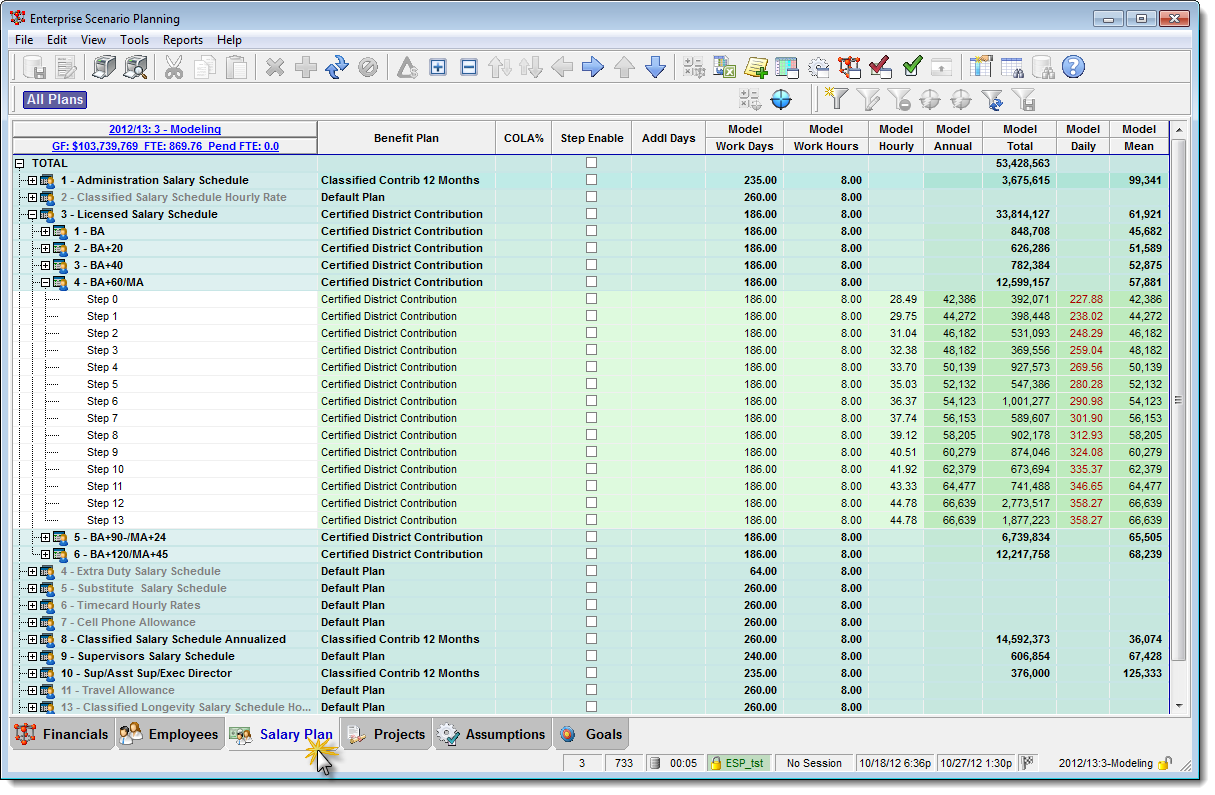Salary Plans
ESP™'s Salary Plans are divided into three components: Plan, Grade and Step. The organization of the Salary Plans is shown on the Salary Plan grid, where they are are structured hierarchically in the left-hand column. The combination of the Plan, Grade, and Step is referred to as a Salary Plan Code. Individual salary plan elements that make up the Plan Code are as follows:
▪Plan - Top level in the tree under salary plan tab
▪Grade - Second level under plan in the tree
▪Step - Step level of the employee, e.g., Step 1, Step 2, Step 3, etc.
|

Salary Plans
From the payroll perspective, an employee’s actual Work Time (Work Hours* Work Days) is controlled by the Employee Position and Work Calendar. That Work Time is typically multiplied by the salary plan hourly rate for hourly plans, or converted to a Full Time Equivalency (FTE) factor and multiplied by the salary plan annual rate. Then, funding prorations split the pay amounts into their appropriate cost accounting account codes.
It is often found that the annual salary of an hourly plan is not correct with relation to the Work Time, or the Hourly Rate is not correct with relation to the Annual Rate. A key factor to getting ESP Employees and Salary Plans working together is making sure the Salary Plan defaults are set up properly and needs accurate Hourly Rates as well as an Annual Rates when calculating Salary Plan Steps, COLA’s, Employee Pay Components, etc.
ESP will load all the Salary Schedules which exist in an organization's ERP system, so it is important to include all the schedules in this table.
